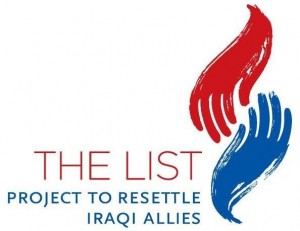Despite the length of our involvement in Vietnam, the United States did not turn its attention to the fate of its South Vietnamese employees until the final weeks of the war. Declassified White House transcripts from the period confirm that President Ford and Secretary of State Henry Kissinger did not seriously begin discussions about saving our Vietnamese employees until just three weeks before the fall of Saigon. In those conversations, Kissinger estimated an ‘irreducible list’ of 174,000 South Vietnamese allies to whom we had a special obligation. A frenzied eleventh-hour request for $722 million to fund an evacuation went unfunded by a war-weary Congress, which was critical of the absence of any comprehensive or realistic plans to implement such a program.
Adeclassified Memorandum of Conversation of an early April 1975 White House meeting with the Joint Congressional leadership reveals how political considerations hindered capacity to help the nearly 200,000 South Vietnamese who were in mortal danger as America pulled out of Vietnam. Throughout dozens of conversations in the closing weeks of the war, it was clear to both the President and Congress that no serious capacity had been em-placed to evacuate our Vietnamese employees.
What ensued was a frantic mess. Generals ignored immigration law and conducted ‘black flights’ of Vietnamese employees. Embassy and aid workers arranged last-minute sham marriages and adoptions to bring their imperiled friends out. A poorly-planned airlift of 149 orphans crashed minutes after taking off, killing all but a few. U.S.-policy effectively came down to which South Vietnamese were persistent enough to push their way past Embassy guards and find a seat on a handful of helicopters. (These scenes were later broadcast on Al-Jazeera throughout the Iraq war to the demoralization of Iraqis who were working for Americans). Clearly, the United States did not plan in advance, and we lost many South Vietnamese employees to killings and reeducation camps. Hundreds of thousands more faced imprisonment, persecution, and death as the U.S. withdrew from Vietnam.

- April 29, 1975 – Saigon, South Vietnam: An Air America helicopter crew member helps evacuees up a ladder on the roof of 18 Gia Long Street shortly before the city fell to advancing North Vietnamese troops. (HvE/ Hugh Van Es UPI)
To his great credit, President Ford eventually committed the United States to a massive resettlement program following the tragic events of our evacuation from Vietnam. This effort began with an initial airlift of over 130,000 South Vietnamese refugees to our military base in Guam. The Vietnamese refugees were then sent to one of four reception camps in the United States for processing security screening, and resettled by the State Department through the coordinated efforts of churches, civic groups, and individual families. In the years that followed Operation New Life, the United States admitted over 900,000 Vietnamese refugees into its borders. The eight-month operation cost $405 million. Despite the high cost,President Ford declared that, “To do less would have added moral shame to humiliation.”
